High-wage occupations by typical entry-level education, 2017
Elka Torpey | January 2019
Overall, wages are higher in occupations typically requiring a degree for entry than in occupations typically requiring less education. But that’s not always the case.
The U.S. Bureau of Labor Statistics (BLS) assigns occupations to education categories on the basis of what is typically required to enter those occupations. As chart 1 shows, the median annual wage in occupations that typically require a degree at the entry level was higher than $37,690, the median wage for all occupations in 2017. (A median wage is the point at which half of workers earned more than this amount and half earned less.)
Chart 1. Median annual wage by typical entry-level education, 2017
| Typical entry-level education |
Median annual wage, 2017(1) |
|
Total, all occupations
|
$37,690 |
|
Doctoral or professional degree
|
103,820 |
|
Master's degree
|
68,090 |
|
Bachelor's degree
|
72,830 |
|
Associate's degree
|
52,830 |
|
Postsecondary nondegree award
|
37,670 |
|
High school diploma or equivalent
|
36,100 |
|
No formal educational credential
|
23,480 |
The top-paying occupations that typically don’t require a degree for entry also exceeded $37,690, even though the overall median annual wage for occupations in these categories paid less than that. The tables that follow show some of the variation among high-wage occupations in different education categories. For example, the best-paying occupations in which the typical entry-level education is a high school diploma had a median wage topping that of some of the highest paying associate’s degree-level occupations in 2017.
For each occupation listed, the tables also show the experience typically required at the entry level; on-the-job training typically required to attain competency; and annual openings, on average, projected from 2016 to 2026.
Doctoral or professional degree
The highest paying education category is occupations that typically require a doctoral or professional degree for entry. The BLS Occupational Employment Statistics program does not publish wages for occupations that have a median annual wage greater than or equal to $208,000. Therefore, table 1 shows mean, rather than median, wages.
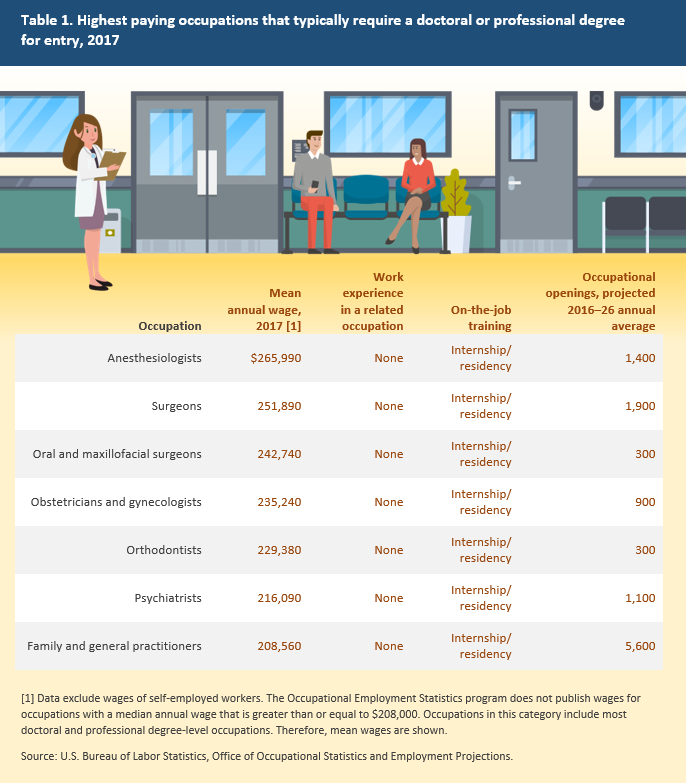
Table 1. Highest paying occupations that typically require a doctoral or professional degree for entry, 2017
| Occupation |
Mean annual wage, 2017(1) |
Work experience in a related occupation |
On-the-job training |
Occupational openings, projected 2016–26 annual average |
|
Anesthesiologists
|
$265,990 |
None |
Internship/residency |
1,400 |
|
Surgeons
|
251,890 |
None |
Internship/residency |
1,900 |
|
Oral and maxillofacial surgeons
|
242,740 |
None |
Internship/residency |
300 |
|
Obstetricians and gynecologists
|
235,240 |
None |
Internship/residency |
900 |
|
Orthodontists
|
229,380 |
None |
Internship/residency |
300 |
|
Psychiatrists
|
216,090 |
None |
Internship/residency |
1,100 |
|
Family and general practitioners
|
208,560 |
None |
Internship/residency |
5,600 |
The occupation of family and general practitioners is projected to have 5,600 openings each year, on average, from 2016 to 2026, the most of the highest paying occupations that typically require a doctoral or professional degree for entry.
Master’s degree
All of the occupations listed in table 2 pay more than $100,000 per year at the median. This is the only educational category in which all of the highest wage occupations typically don’t have requirements for experience or on-the-job training.
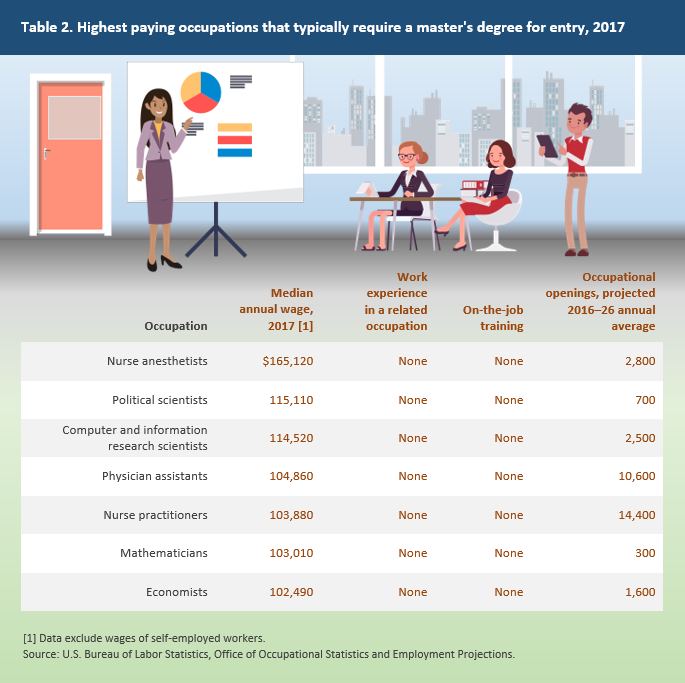
Table 2. Highest paying occupations that typically require a master's degree for entry, 2017
| Occupation |
Median annual wage, 2017(1) |
Work experience in a related occupation |
On-the-job training |
Occupational openings, projected 2016–26 annual average |
|
Nurse anesthetists
|
$165,120 |
None |
None |
2,800 |
|
Political scientists
|
115,110 |
None |
None |
700 |
|
Computer and information research scientists
|
114,520 |
None |
None |
2,500 |
|
Physician assistants
|
104,860 |
None |
None |
10,600 |
|
Nurse practitioners
|
103,880 |
None |
None |
14,400 |
|
Mathematicians
|
103,010 |
None |
None |
300 |
|
Economists
|
102,490 |
None |
None |
1,600 |
The occupation of nurse practitioners is projected to have 14,400 openings annually, on average, from 2016 to 2026, the most of the highest paying occupations that typically require a master’s degree for entry.
Bachelor’s degree
The bachelor’s-level occupations shown in table 3 paid more than six of the seven highest paying master’s-level occupations—and chief executives tops even the highest paying master’s-level occupation, nurse anesthetists. However, all but petroleum engineers typically require work experience in a related occupation for entry.
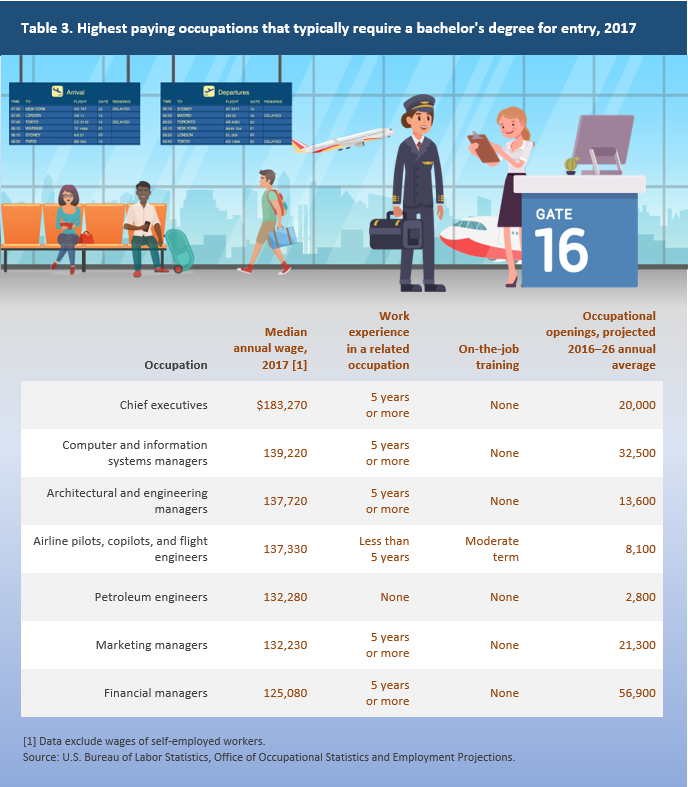
Table 3. Highest paying occupations that typically require a bachelor's degree for entry, 2017
| Occupation |
Median annual wage, 2017(1) |
Work experience in a related occupation |
On-the-job training |
Occupational openings, projected 2016–26 annual average |
|
Chief executives
|
$183,270 |
5 years or more |
None |
20,000 |
|
Computer and information systems managers
|
139,220 |
5 years or more |
None |
32,500 |
|
Architectural and engineering managers
|
137,720 |
5 years or more |
None |
13,600 |
|
Airline pilots, copilots, and flight engineers
|
137,330 |
Less than 5 years |
Moderate-term on-the-job training |
8,100 |
|
Petroleum engineers
|
132,280 |
None |
None |
2,800 |
|
Marketing managers
|
132,230 |
5 years or more |
None |
21,300 |
|
Financial managers
|
125,080 |
5 years or more |
None |
56,900 |
The occupation of financial managers is projected to have 56,900 openings each year, on average, from 2016 to 2026—the most of all the highest paying occupations shown in each education category.
Associate’s degree
The highest paying occupation in table 4 is air traffic controllers, which had a wage that was more than triple the median wage for all workers. In this occupation, workers typically need long-term on-the-job training to become competent in their job tasks.
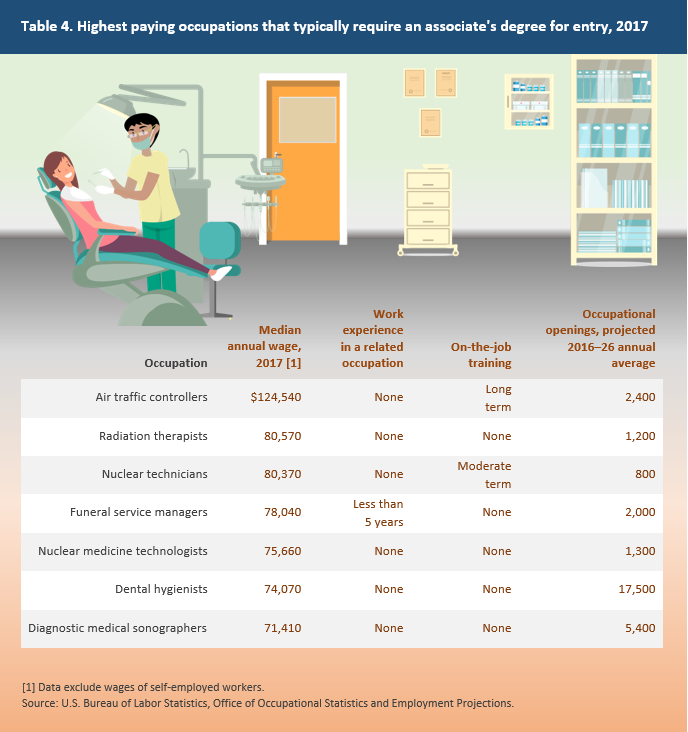
Table 4. Highest paying occupations that typically require an associate's degree for entry, 2017
| Occupation |
Median annual wage, 2017(1) |
Work experience in a related occupation |
On-the-job training |
Occupational openings, projected 2016–26 annual average |
|
Air traffic controllers
|
$124,540 |
None |
Long-term on-the-job training |
2,400 |
|
Radiation therapists
|
80,570 |
None |
None |
1,200 |
|
Nuclear technicians
|
80,370 |
None |
Moderate-term on-the-job training |
800 |
|
Funeral service managers
|
78,040 |
Less than 5 years |
None |
2,000 |
|
Nuclear medicine technologists
|
75,660 |
None |
None |
1,300 |
|
Dental hygienists
|
74,070 |
None |
None |
17,500 |
|
Diagnostic medical sonographers
|
71,410 |
None |
None |
5,400 |
The occupation of dental hygienists is projected to have 17,500 openings each year, on average, from 2016 to 2026, more than any of the other highest paying occupations that typically require an associate’s degree for entry.
Postsecondary nondegree award
Repair occupations are among the highest paying postsecondary nondegree award occupations shown in table 5. Aircraft mechanics and service technicians is the only occupation in the table that typically doesn’t have requirements for work experience or on-the-job training in addition to completing an academic program.
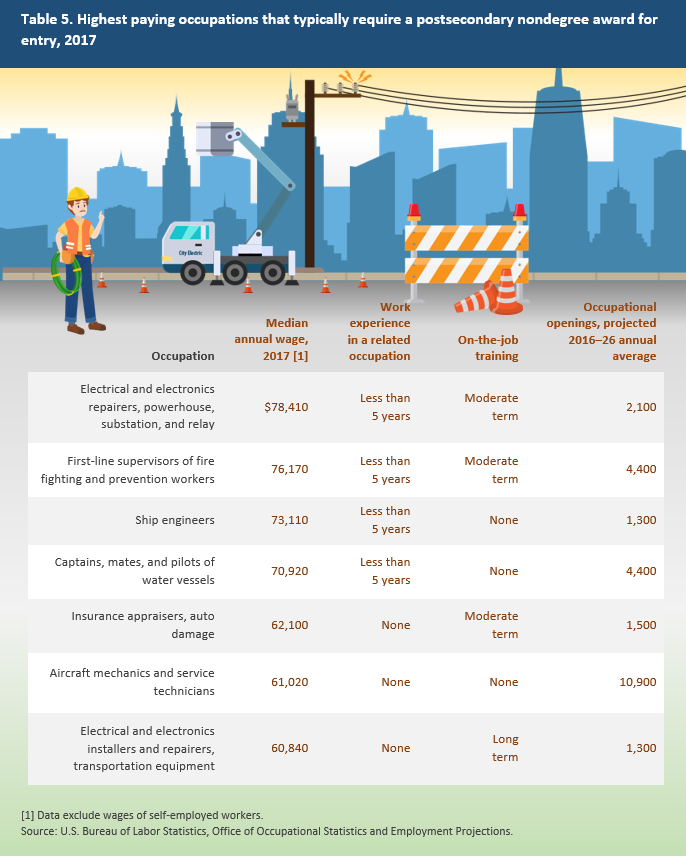
Table 5. Highest paying occupations that typically require a postsecondary nondegree award for entry, 2017
| Occupation |
Median annual wage, 2017(1) |
Work experience in a related occupation |
On-the-job training |
Occupational openings, projected 2016–26 annual average |
|
Electrical and electronics repairers, powerhouse, substation, and relay
|
$78,410 |
Less than 5 years |
Moderate-term on-the-job training |
2,100 |
|
First-line supervisors of fire fighting and prevention workers
|
76,170 |
Less than 5 years |
Moderate-term on-the-job training |
4,400 |
|
Ship engineers
|
73,110 |
Less than 5 years |
None |
1,300 |
|
Captains, mates, and pilots of water vessels
|
70,920 |
Less than 5 years |
None |
4,400 |
|
Insurance appraisers, auto damage
|
62,100 |
None |
Moderate-term on-the-job training |
1,500 |
|
Aircraft mechanics and service technicians
|
61,020 |
None |
None |
10,900 |
|
Electrical and electronics installers and repairers, transportation equipment
|
60,840 |
None |
Long-term on-the-job training |
1,300 |
And the 10,900 openings projected each year, on average, from 2016 to 2026 for aircraft mechanics and service technicians is another way this occupation stands apart from the other highest paying occupations that typically require a postsecondary nondegree award for entry.
High school diploma or equivalent
Wages for the top-paying high school-level occupations were more than double the median for all occupations. Each of the occupations listed in table 6 typically requires either work experience in a related occupation or on-the-job training—or both experience and training.
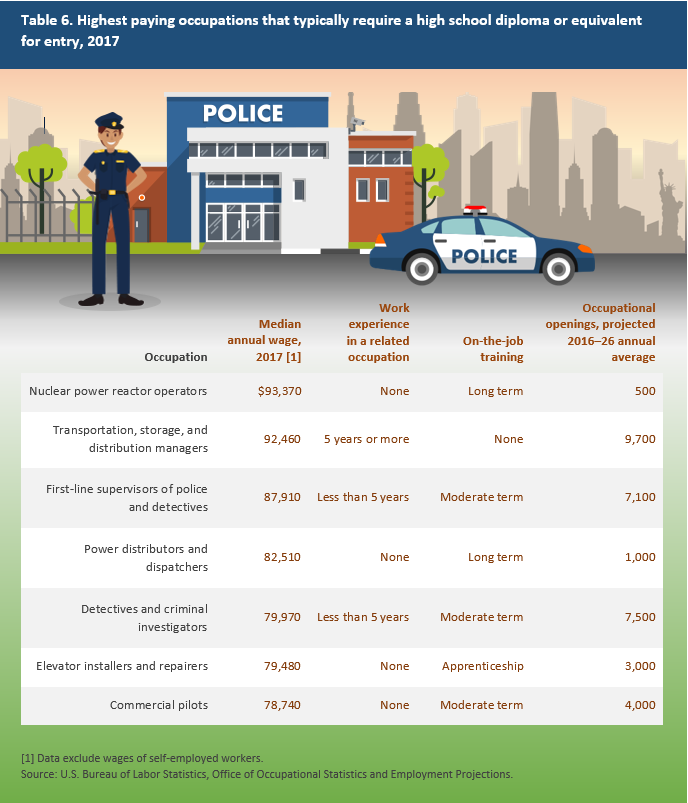
Table 6. Highest paying occupations that typically require a high school diploma or equivalent for entry, 2017
| Occupation |
Median annual wage, 2017(1) |
Work experience in a related occupation |
On-the-job training |
Occupational openings, projected 2016–26 annual average |
|
Nuclear power reactor operators
|
$93,370 |
None |
Long-term on-the-job training |
500 |
|
Transportation, storage, and distribution managers
|
92,460 |
5 years or more |
None |
9,700 |
|
First-line supervisors of police and detectives
|
87,910 |
Less than 5 years |
Moderate-term on-the-job training |
7,100 |
|
Power distributors and dispatchers
|
82,510 |
None |
Long-term on-the-job training |
1,000 |
|
Detectives and criminal investigators
|
79,970 |
Less than 5 years |
Moderate-term on-the-job training |
7,500 |
|
Elevator installers and repairers
|
79,480 |
None |
Apprenticeship |
3,000 |
|
Commercial pilots
|
78,740 |
None |
Moderate-term on-the-job training |
4,000 |
The occupation of transportation, storage, and distribution managers is projected to have 9,700 openings annually, on average, from 2016 to 2026, the most of the highest paying occupations that typically require a high school diploma or equivalent for entry.
As table 7 shows, mine shuttle car operators had the highest median annual wage of the occupations that typically don’t require a formal educational credential for entry. On-the-job training is typically required for competency in all of the occupations shown.
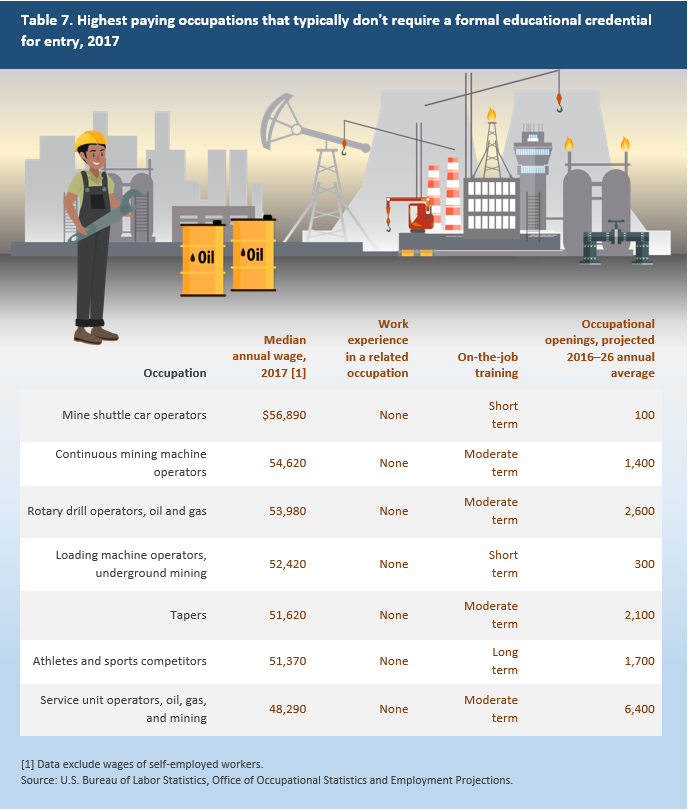
Table 7. Highest paying occupations that typically don't require a formal educational credential for entry, 2017
| Occupation |
Median annual wage, 2017(1) |
Work experience in a related occupation |
On-the-job training |
Occupational openings, projected 2016–26 annual average |
|
Mine shuttle car operators
|
$56,890 |
None |
Short-term on-the-job training |
100 |
|
Continuous mining machine operators
|
54,620 |
None |
Moderate-term on-the-job training |
1,400 |
|
Rotary drill operators, oil and gas
|
53,980 |
None |
Moderate-term on-the-job training |
2,600 |
|
Loading machine operators, underground mining
|
52,420 |
None |
Short-term on-the-job training |
300 |
|
Tapers
|
51,620 |
None |
Moderate-term on-the-job training |
2,100 |
|
Athletes and sports competitors
|
51,370 |
None |
Long-term on-the-job training |
1,700 |
|
Service unit operators, oil, gas, and mining
|
48,290 |
None |
Moderate-term on-the-job training |
6,400 |
The occupation of service unit operators in oil, gas, and mining is projected to have 6,400 openings each year, on average, from 2016 to 2026, the most of the highest paying occupations that typically don’t require a formal educational credential for entry.
A complete list of occupational wages, as well as typical entry-level education requirements and projected openings, is available from the BLS Employment Projections program. Additional wage data are available from the Occupational Employment Statistics program.
Elka Torpey is an economist in the Office of Occupational Statistics and Employment Projections, BLS. She can be reached at torpey.elka@bls.gov.
Suggested citation:
Elka Torpey, "High-wage occupations by typical entry-level education, 2017,"
Career Outlook,
U.S. Bureau of Labor Statistics,
January 2019.
 United States Department of Labor
United States Department of Labor